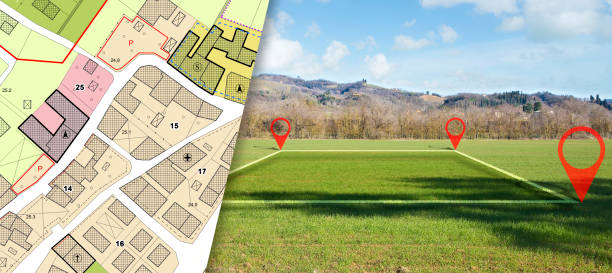While the Dharani portal was designed to modernize land record management in Telangana, numerous issues have emerged that impact its effectiveness. Discrepancies in ownership records, misclassification of land, technical glitches, and challenges faced by small farmers highlight the need for ongoing improvements and support systems.
As the Telangana government works towards addressing these concerns through appointed committees and proposed reforms, it remains crucial for users to stay informed about property owner rights and available resources for resolving issues related to land records in Hyderabad.
What are the common issues faced while using the Dharani portal?
The Dharani portal, launched by the Telangana government in October 2020, was intended to streamline land record management and improve transparency in property transactions. However, many users have reported various issues that hinder its effectiveness. Here’s a comprehensive overview of the common problems faced while using the Dharani portal.
Common Issues Faced While Using the Dharani Portal
1. Discrepancies in Land Ownership Records
One of the most significant issues reported is the discrepancy in land ownership records. Many farmers and property owners have found that their names do not appear in the portal, or their land is incorrectly attributed to someone else. For instance, individuals who have legally purchased land decades ago are often unable to access benefits from government schemes because their names are missing from the records, leading to financial losses and confusion regarding ownership rights2.
2. Incorrect Classification of Land
Users have reported instances where agricultural land is incorrectly classified as NALA (non-agriculture land assessment) or is marked as government or prohibited land. This misclassification can prevent owners from selling their properties or accessing loans against them1. Such errors often result from inadequate initial surveys before the portal’s launch.
3. Inability to Correct Errors
Once data is entered into the Dharani portal, making corrections has proven challenging. Users have expressed frustration over the lack of options to rectify wrong entries or classifications. Many have had to resort to submitting petitions to local revenue offices or district collectors, which can be a lengthy and bureaucratic process12.
4. Technical Glitches and Accessibility Issues
The portal has faced various technical glitches, including slow loading times and difficulty accessing specific features. Users often report that they encounter errors when trying to retrieve their land information or when attempting to file requests for mutations or other services4. These technical issues can significantly delay property transactions and lead to frustration among users.
5. Lack of Comprehensive Land Surveys
Critics of the Dharani portal argue that it was implemented without thorough field-level surveys of land records. This oversight has resulted in many inaccuracies in the data presented on the portal, leading to disputes and confusion among landowners23. The absence of a comprehensive verification process prior to digitization has left many users vulnerable to errors that affect their rights.
6. Prohibited Land Listings
Many users have found their lands listed under prohibitory categories without clear justification. This situation prevents them from selling or transferring ownership of their properties, causing significant distress for those who rely on these transactions for financial stability14. The lack of transparency regarding why certain lands are flagged as prohibited adds to user frustration.
7. Challenges for Small Farmers
Small and marginal farmers face particular challenges with the Dharani portal. Many have reported difficulties in selling their lands due to complications arising from incorrect records or prohibitory listings. The bureaucratic hurdles involved in rectifying these issues can be overwhelming for individuals who may not have the resources to navigate the system effectively3.
8. Legal Complications and Delays
The introduction of the Dharani portal has led to increased legal complications for many property owners. With incorrect records preventing rightful owners from asserting their claims, some individuals have been forced to seek legal recourse, which can be time-consuming and costly4. The need for historical documentation further complicates matters for those with ancestral properties.
How can I verify the authenticity of land records found on Dharani?
The Dharani portal, launched by the Government of Telangana, aims to provide a transparent and user-friendly system for accessing land records.
To verify the authenticity of land records found on the Dharani portal, it is essential to follow a structured approach that ensures you have accurate and legitimate information regarding property ownership and details.
Steps to Verify Authenticity of Land Records on Dharani
1. Access the Dharani Portal
Begin by visiting the official Dharani portal at dharani.telangana.gov.in. This is the primary platform for accessing land records in Telangana.
2. Choose the Right Search Option
On the homepage, you will find various options for searching land records. You can search using either:
- Pattadar Passbook Number
- Survey Number
Select the appropriate option based on the information you have.
3. Enter Required Details
Once you select your search option, you will need to fill in specific details:
- District: Choose your district from the dropdown menu.
- Mandal: Select the relevant mandal (administrative division).
- Village: Enter the name of your village.
- Pattadar Passbook Number or Survey Number: Input the number associated with your property.
- Captcha Code: Enter the CAPTCHA code displayed on the screen to verify that you are not a robot.
After filling in all necessary details, click on the “Fetch” or “Get Details” button.
4. Review Land Record Details
Upon submission, the portal will display detailed information about the land, including:
- Landowner’s Name: The name of the current owner or pattadar.
- Survey Numbers: Unique identifiers for the land parcel.
- Extent of Land: Total area of the property.
- Document Type: Types of documents associated with the land (e.g., sale deed).
- Land Location Map: Visual representation of where the property is situated.
Ensure that all details match your records and expectations.
5. Download and Save Records
If you find that the information is accurate and legitimate, you can download a soft copy of these records for your personal files. This document can serve as proof of ownership and may be useful for future transactions or legal matters.
6. Cross-Verification with Physical Documents
While online verification is crucial, it’s also important to cross-check this information with physical documents you possess:
- Original Sale Deed
- Encumbrance Certificate
- Revenue Record Extracts
Comparing online data with these documents can help identify any discrepancies or errors.
7. Consult Local Authorities if Necessary
If you encounter any issues or discrepancies during your verification process, consider reaching out to local revenue offices or legal experts specializing in property law. They can provide guidance on how to resolve any issues related to land records.
Additional Tips for Ensuring Authenticity
- Check for Encumbrance Certificates (EC): Use the Dharani portal to check if there are any encumbrances on your property. This certificate indicates whether there are any legal liabilities associated with the land.
- Stay Updated: Regularly check your land records for updates or changes that may occur due to government policies or administrative actions.
- Engage Legal Experts: If you’re uncertain about any aspect of your land records or face legal complexities, consulting with a property lawyer can provide clarity and assistance.
Are there alternative methods to check land records if the Dharani portal is not operational?
While the Dharani portal provides a streamlined approach to accessing land records in Telangana, there are several alternative methods available if it becomes non-operational. By visiting local revenue offices, utilizing the CCLA portal, engaging with Meeseva centers, consulting legal professionals, using mobile applications, leveraging community resources, or checking with real estate agents, property owners can still obtain vital information regarding their land holdings. Staying informed about these alternatives ensures that you can effectively manage your property rights even when digital platforms face challenges.
1. Visit Local Revenue Offices
One of the most reliable ways to obtain land records is by visiting local revenue offices or sub-registrar offices. Here, you can request certified copies of land documents and other related records. Ensure you have the necessary details, such as:
- Survey number
- Pattadar passbook number
- District and mandal information
Local officials can assist you in retrieving the required information and guide you through any necessary paperwork.
2. Chief Commissioner of Land Administration (CCLA) Portal
The CCLA portal serves as an alternative resource for accessing land records. Although the Dharani portal is primarily for agricultural land, the CCLA portal may still provide access to certain documents like Pahani and ROR-1B (Record of Rights). Here’s how to use it:
- Visit the CCLA Portal: Go to the official CCLA website.
- Select District and Mandal: Choose your district and mandal from the dropdown menus.
- Enter Required Details: Input necessary information such as khata number or buyer/seller name.
- Submit Your Query: Click on “Get Details” to view the relevant land records.
3. Meeseva Centers
Meeseva centers are government-run service centers that provide various citizen services, including access to land records. You can visit a nearby Meeseva center and request assistance with your land-related queries. Bring along any identification documents and details about your property.
4. Engage Legal Professionals
If you encounter difficulties accessing land records or need assistance with legal matters related to property, consider consulting a property lawyer or legal expert. They can help you navigate the complexities of land records and provide insights into your rights and responsibilities as a property owner.
5. Other Resources
While the Dharani portal has its dedicated app, other applications may also provide access to land-related services. Check for any government-approved apps that offer features such as:
- Viewing land records
- Checking encumbrance certificates
- Accessing property tax details
Engaging with local community groups or forums can provide insights into alternative methods for accessing land records. Residents often share their experiences and tips on navigating bureaucratic processes, which can be invaluable when official channels are down.
Local real estate agents often have access to various databases and resources related to property transactions in Hyderabad. They can assist in obtaining information about specific properties, including ownership details and transaction history.
What steps should I take if I find discrepancies in my land records?
If you find discrepancies in your land records, it’s crucial to address them promptly to ensure the accuracy and integrity of your property ownership. Here are the steps you should take to resolve these:
1. Verify the Discrepancy
Start by carefully examining your land records and comparing them with any physical documents you possess, such as sale deeds, tax receipts, or previous land records. Identify the specific discrepancies, which could include:
- Incorrect names or spellings
- Wrong survey numbers
- Misstated property boundaries
- Missing documents
Gather evidence and supporting documents that substantiate your claim.
2. Consult the Concerned Authority
Contact the local revenue or land records office responsible for maintaining land records in your area. Explain the discrepancy clearly and provide them with all necessary details and evidence. This initial consultation can help you understand the process for rectifying the issue.
3. Provide Documentation
Prepare and submit any relevant documents that support your claim for correction. This may include:
- Original sale deed
- Encumbrance certificate
- Survey reports
- Title deeds
- Any other legal documents that establish correct ownership or property details
Ensure that you keep copies of all submitted documents for your records.
4. Lodge a Complaint or Appeal
If the discrepancy is not resolved satisfactorily at the local level, you may need to lodge a formal complaint or appeal with higher authorities. This could involve:
- Filling out specific forms provided by the local land office
- Submitting a written complaint detailing the issue
- Including copies of all supporting documentation
Follow the prescribed procedure carefully to ensure your appeal is processed.
5. Seek Legal Assistance
If the discrepancy involves complex legal issues or disputes, it’s advisable to consult with a lawyer who specializes in property law. They can provide guidance on your rights, legal options, and the best course of action to take. Legal assistance may be particularly important if:
- The discrepancy leads to a potential dispute with another party.
- You need to file a lawsuit or initiate legal proceedings.
6. Resolution through Legal Proceedings
In some cases, resolving a discrepancy in land records may require formal legal action. This could involve:
- Filing a lawsuit to establish rightful ownership.
- Initiating alternative dispute resolution mechanisms if applicable.
Be prepared to present evidence, witnesses, and arguments to support your case in court.
After taking these steps, monitor the progress of your complaint or appeal closely. Follow up with local authorities regularly to ensure that your case is being addressed in a timely manner. Keep yourself informed about any updates regarding land record management practices in your area. Changes in government policies or procedures can affect how discrepancies are handled.
If you have any other questions regarding dharani such as the following, please reach out to us at info@assetcareindia.com or +919581118886 or https://assetcareindia.com.
- How can I contact the Telangana Revenue Department for land record-related issues
- What are the main reasons for the discrepancies in land ownership records on Dharani
- How can I resolve issues related to my land being shown as NALA
- What steps can I take if my land is incorrectly listed as government or ceiling land
- How can I get my name corrected in the Dharani portal if it’s not recognized
- What is the process for appealing to the district collector for land record corrections
- How can I ensure the accuracy of the information displayed on Dharani
- What should I do if the land details on Dharani do not match my physical property
- Are there any specific documents required to verify land ownership on Dharani
- How can I verify if my land is under any legal or monetary liabilities on Dharani
- What are the steps to download a soft copy of my land records from Dharani




